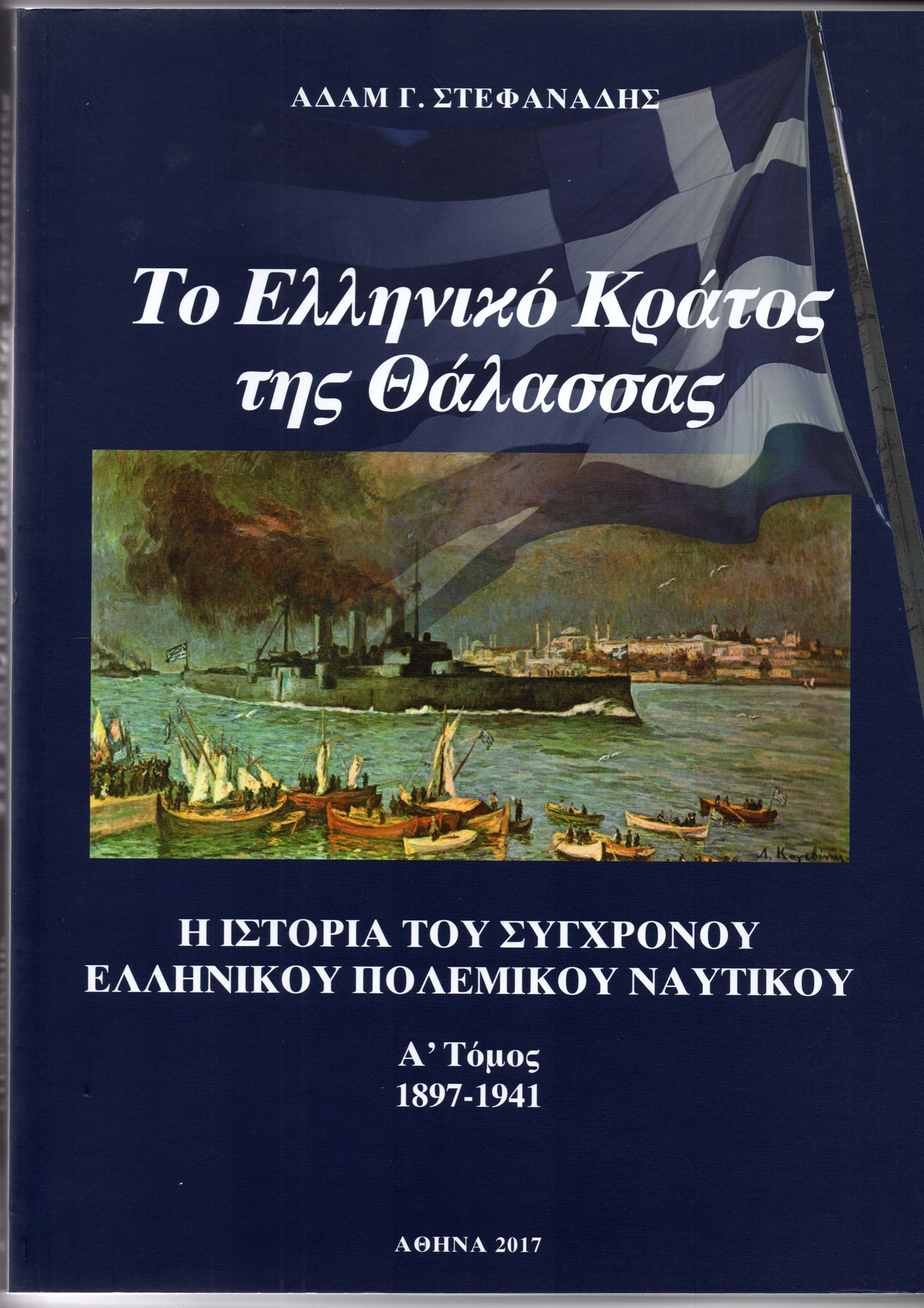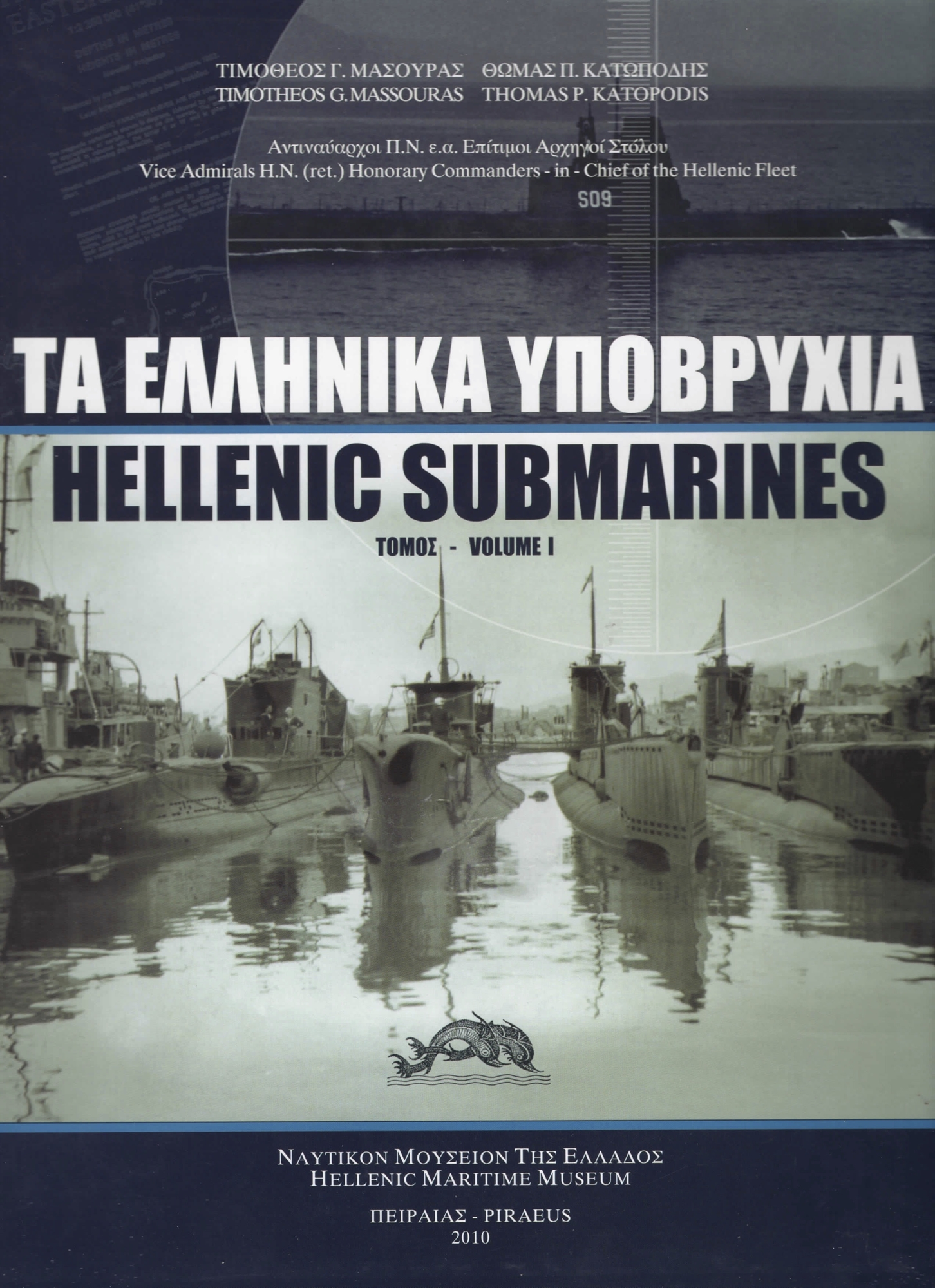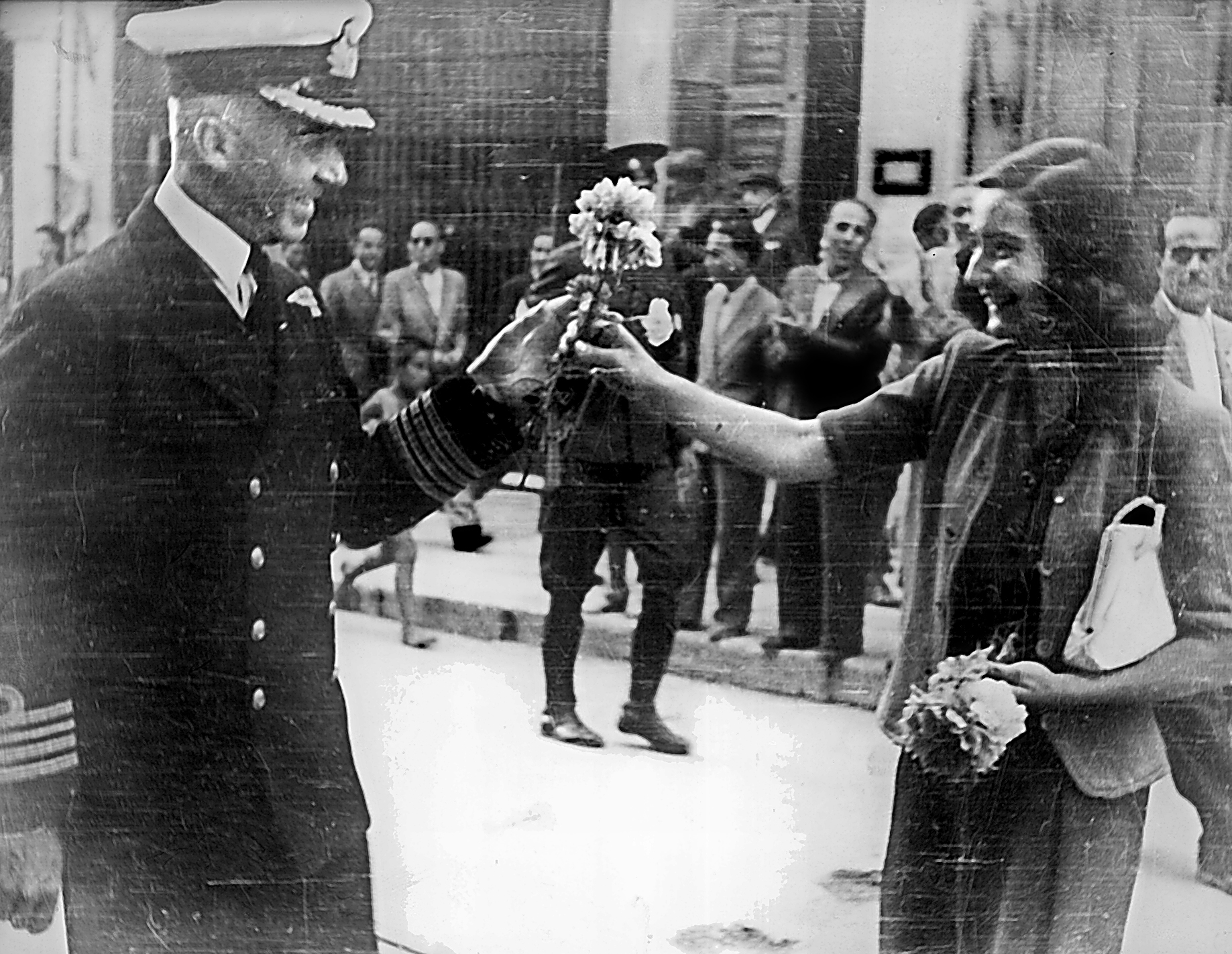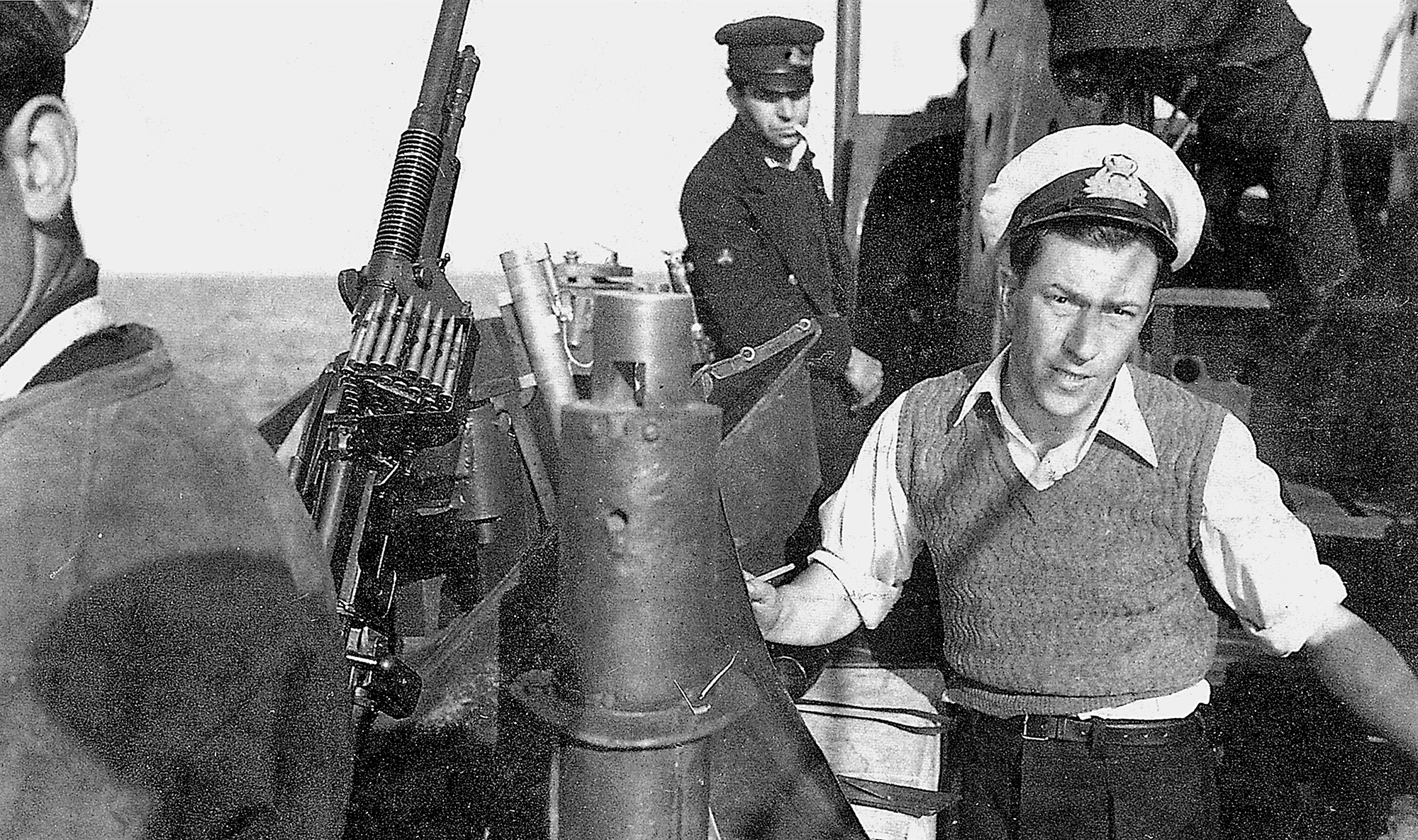
Adam Stephanadis, the son of a senior Navy officer, tells a fascinating story: many triumphs, but also a few dark days for a fleet that typically fought under difficult conditions and outnumbered, often qualitatively, behind in terms of resources, but built on a glorious tradition and , above all, on the navigation of their spiritual potential. As a result, he never presented the flag.

The fascinating story begins with the ill-fated, as its author rightly describes, war of 1897 and continues with the military training of the Navy, which included, among other things, the establishment of the National Navy Fund and the release of the Greek National Navy Lottery. At that time, there was also a lively debate in Greece about the structure of the fleet: battleships or lighter ships and submarines. Of course, it was not without detailed descriptions of the heroic battles of the battleship “Averof” and other ships of the fleet (such as torpedo boats 11 and 14) during the Balkan wars, with special emphasis on the naval battles “Helly” and “Lemnos”, under the leadership of Admiral Kunturiotis. Less well known are the actions of the 29th Naval Regiment during the Balkan Wars. This is followed by the renewal of the fleet during the interwar period and the creation of the Naval College in 1921 (in which the undersigned had the honor of teaching from 1992 to 2003, when the school was also developing).
Further, the sinking of the Ellis and the actions of the Navy during the Greco-Italian War, while the main activities were the protection of sea transports and raids in the Adriatic, the loss of the submarine Proteus (1940) and the ships Psara, Kilkis, ” Hydra”, “Leon” after the start of the Greco-German war, the transition to Egypt (1941) and the reconstruction of the fleet in Alexandria. The story continues with the triumphant return of the captured “Adria” to Alexandria, the death of the “Vasilissis Olga” and the submarines “Nirey” and “Triton” in 1942 and the sinking in 1943 after a fierce battle of the submarine “Katsonis” (commander – vice-captain Vasilis Lasko, my grandmother’s cousin) and the participation of the Kriesis and Tombasis corvettes in the battle for the Atlantic. This is followed by the return of the fleet to Greece and reconstruction. The pages of the work describe the heroic actions of officers, including P.N. later honored by giving their names to fast boats: Christalidis, Roussen, Daniolos, Grigoropoulos, Ritsos, Blessas, Mykonios, Troupakis, Maridakis, Pezopoulos, Vlahavas, Turnas, Sakipis, Kavaloudis, Degiannis, Xenos, Simitsopoulos, Starakis, Kostakos, Anninos, Aslanoglu, as well as Miltos Yatridis and many others. Of course, it would take a US-sized fleet to honor all PN heroes with ship names.
After the ill-fated war of 1897, there was a lively discussion in Greece about the structure of the fleet: battleships or lighter ships and submarines.
The narrative continues with minesweeping operations in the Greek seas (1944-1949), the participation of the Navy in the civil war on the side of the government, the failed movements of 1967 and 1973 for the restoration of democracy, and the flight of the destroyer Strela under the command of Vice-Captain Pappa. References to the actions of P.N. could not be missing. in Cyprus, both in 1964 with the heroic Vice-Captain Moutsatsos, commander of the Phaeton patrol boat, and in 1974 with Admiral Chandrinos, commander of the Lesbos tanker, Vice-Captain Tsomakis, commander of the T3 torpedo boat, which is the last fallen officer P.N. during the hostilities and the withdrawal of two T209 submarines before they managed to strike at the Turkish landing force.
After 1974, a major armaments program begins with the purchase, acquisition or construction of German T209 submarines, French Combattante II and III missiles, US Adams destroyers and Knox-class frigates, Dutch-made S/Körtenaer frigates and German-designed MEKO frigates, British-designed missiles. Rushen and, finally, the German submarine of project T214. As well as Greek-built tankers and helicopters and aircraft of naval cooperation. This is a period of impressive transformation and modernization of P.N.

Below are two major Greek-Turkish crises of the late twentieth century, about which much has been written: the 1987 crisis with the withdrawal of the entire fleet and the Imiya crisis (1996) with the successful capture of Turkish ships and the shooting down of the F / C Navarinon helicopter, which led to to the tragic death of the crew (sub-captains Christodoulos Karathanasis and Panagiotis Vlahakou and chief pilot Hector Ialopsos). In addition to the participation of P.N. in many multinational companies under the auspices of the UN, the EU. and NATO, of particular interest because they are largely unknown to the general public, are participating in various operations to rescue Greeks and foreign citizens from conflict zones, such as the Golden Fleece (1993, liberation of 2000 Greeks from Abkhazia), Kosmas Etholos (1997, 240 foreigners from Albania), Kedros (2006, 2650 Greeks and foreigners from Beirut) and Agenor (2014, 186 Greeks and foreigners from Libya). Finally, in 1991, the first women were admitted to the Naval Cadet School in the financial officer department, and in 2002 in the combat and financial officer department.
There are also references to the darker pages of P.N. history, such as the aftermath of national divisions in the 1910s and 1930s, as well as the rebellious movement of the navy (in 1944, along with the army and air force ), which caused, among other suffering, the death of Lieutenant Roussin, commander of the Papanikolis submarine, as well as various accidents, such as the explosion of the destroyer Leon in Piraeus and the flooding of the Alexandros Z. ferry, which operated along the Piraeus – Salamis route and caused death of 297 members of the then Royal Navy, the wreck of the tanker “Merlin” in 1972 south of the port of Piraeus, with a death toll of 44 people and flooding, in 1996, the TPK “Kostakos” after a collision with the passenger “Samina” on the north coast of Samos, with loss of 4 crew members.Overall, this is undoubtedly a valuable historical work with an extensive bibliography and sources in each chapter, as well as extremely interesting reading material for leaders of P.N. and the Armed Forces in general, but also for those who are interested in the history of our country.



From “wooden walls” and “Sword” to Belharr frigates
Equally interesting, though more limited thematically, is the two-volume work of Timothy Masouras and Thomas Katopodis, retired senior officers of the PN, on the history of Greek submarines. Mention is made of the Submarine Command, the Submarine School, the Submarine Base, the first Swedish-built Nordenfelt-class Greek submarine (1884), the Dolphin and Xifias submarines (1912, 1913), the heroic submarines of the Second world war, “Katsonis”, “Papanikolis”, “Proteves”, “Nireus”, “Triton”, “Glaukos”, “Matrozos”, “Pipinos”, in used British and American submarines, which P. N. three decades after the end of WWII, as well as in the newer T209 [1100] (“Glavk”, “Nereus”, “Triton”, “Proteus”), Т209 [1200] (“Poseidon”, “Amfitritis”, “Okeanos”, “Pontos”) and in modern T214 (“Papanikolis”, “Pipinos”, “Matrozos”, “Katsonis”). The detailed history of each submarine also includes the names of current commanders.
In order to connect the past with the present and the future, it should be mentioned that the main principle of the Greek national security strategy is that, given history and geography, the importance of sea power will continue to be emphasized. After all, how could a traditional naval power like Greece with “wooden walls” not make it its primary goal to continue to play a central role in the Aegean and Eastern Mediterranean. Achieving this goal is in the interests of survival, and our country should use a number of tools and capabilities, such as the navy and the Coast Guard / Greek Coast Guard, which certainly need to be strengthened (using new technologies and developing the Aegean Sea surveillance system), its gigantic merchant shipping footprint, a healthy shipbuilding defense industry, its participation in the EU, which should finally develop a naval strategy, NATO, as well as its regional alliances. Thus, since 2019, as the country gradually emerged from the long-term economic crisis that did not leave the country’s Armed Forces unscathed, the implementation of a program to strengthen the Armed Forces began, with the purchase of French Belharra air defense aircraft. / FDI (Kimon, Nearchos and Formion), the construction of modern corvettes and the modernization of F / G MEKO and the purchase of American anti-submarine F / G Romeo. Mention should also be made of the donation of three support vessels by shipowner Panos Laskaridis, which should be a role model for the Greek shipping and business community and not just an isolated step. He also made a major effort to rebuild the Skaramangas and Elefsina shipyards, which, combined with the aforementioned armaments programs, would provide important opportunities for the Greek shipbuilding and defense industries. Finally, an important task for PN is to exploit new technologies in the field of unmanned vehicles (air, surface and underwater) both in terms of their application, and in terms of their response and determining the future combination of forces. If required, at this critical geopolitical moment, PN, in close cooperation with the army and air force, as well as with LS / ELAKT, is ready to add new pages to its glorious history.
Mr. Thanos P. Dokos is the Prime Minister’s National Security Adviser.
Source: Kathimerini
Ashley Bailey is a talented author and journalist known for her writing on trending topics. Currently working at 247 news reel, she brings readers fresh perspectives on current issues. With her well-researched and thought-provoking articles, she captures the zeitgeist and stays ahead of the latest trends. Ashley’s writing is a must-read for anyone interested in staying up-to-date with the latest developments.